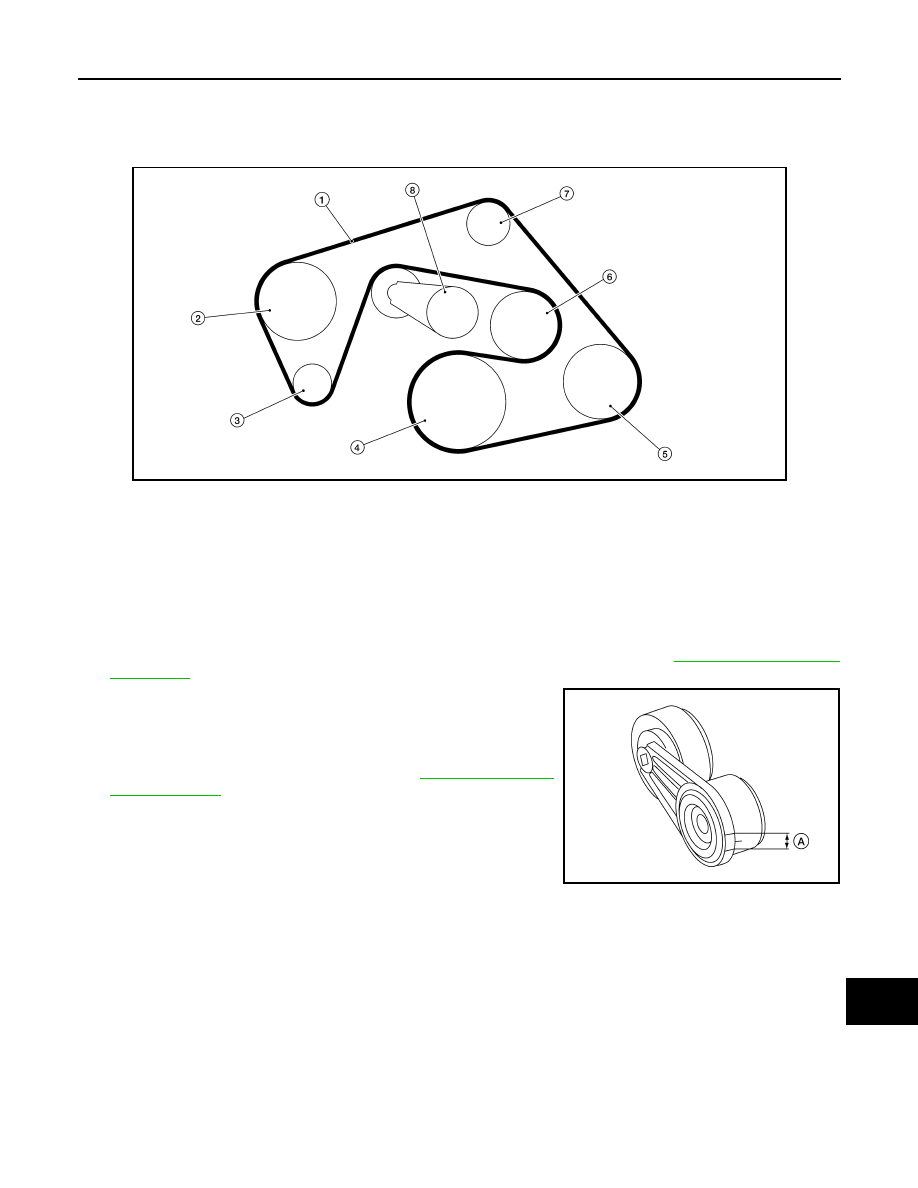Content .. 999 1000 1001 1002 ..
Nissan Frontier. Manual - part 1001

ENGINE MAINTENANCE (VQ40DE)
MA-31
< PERIODIC MAINTENANCE >
C
D
E
F
G
H
I
J
K
L
M
B
MA
N
O
A
ENGINE MAINTENANCE (VQ40DE)
DRIVE BELT
DRIVE BELT : Exploded View
INFOID:0000000009478636
DRIVE BELT : Checking Drive Belts
INFOID:0000000009478637
WARNING:
Be sure to perform when the engine is stopped.
1. Remove air duct and resonator assembly when inspecting drive belt. Refer to
.
2. Make sure that the drive belt tensioner indicator is within the
allowable working range (A) as shown.
3. Visually check entire belt for wear, damage or cracks.
4. If the indicator is out of allowable working range or drive belt is
damaged, replace the drive belt. Refer to
DRIVE BELT : Adjustment
INFOID:0000000009478638
There is no manual drive belt tension adjustment. The drive belt tension is automatically adjusted by the drive
belt auto-tensioner.
ENGINE COOLANT
ENGINE COOLANT : System Inspection
INFOID:0000000009478639
WARNING:
• Do not remove the radiator/reservoir cap when the engine is hot. Serious burns could occur from
high pressure fluid escaping from the radiator or reservoir.
• Wrap a thick cloth around the cap. Slowly push down and turn it a quarter turn to allow built-up pres-
sure to escape. Carefully remove the cap by pushing down and turning it all the way.
LBIA0427E
1.
Drive belt
2.
Power steering oil pump pulley
3.
Generator pulley
4.
Crankshaft pulley
5.
A/C compressor
6.
Cooling fan pulley
7.
Idler pulley
8.
Drive belt tensioner
AWBIA0723ZZ